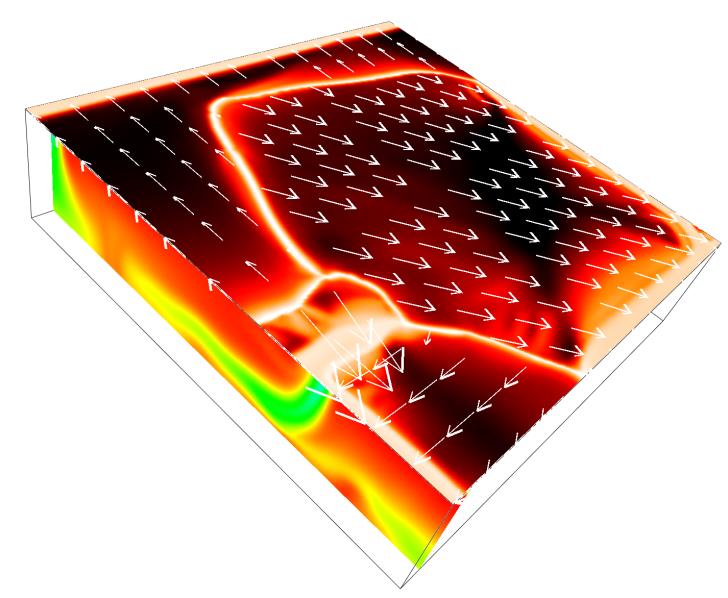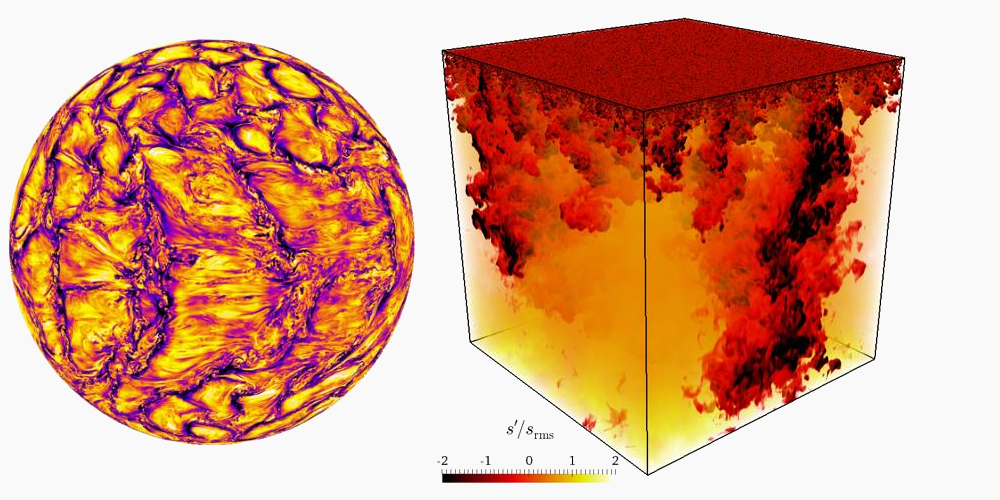Sub-project D
Sub-project D:
Elucidation of Solar and Planetary Dynamics and Evolution
Overview
This project aims to comprehensively understand planetary environmental changes from solar magnetic activity, and to clarify the connection between solar interior activity and interplanetary space dynamics. In addition, we aim to elucidate and predict the effects of solar magnetic activity. We will realize high-resolution continuum mechanics numerical simulations of planetary interiors and surface atmospheres, and aim at a unified understanding of the formation and evolution of the Earth, Moon, and planets, which have been revealed by the expansion of solar system exploration, progress in planet formation theory, and material science and geological studies.
Objectives and methods of this project
We will realize the world’s first first-principles simulation of solar cycle activity, and construct a comprehensive model of the Sun and heliosphere that combines the solar interior and interplanetary space through collaboration between solar physics and terrestrial electromagnetism.
Three-dimensional spherical-shell mantle convection simulations with igneous activity and plate tectonics will elucidate how they govern the mantle evolution of the Moon and Earth. Global simulations of vertical thermal convection in the Martian atmosphere will be used to elucidate the role of vertical convection in Martian meteorology, and high-resolution simulations of the Venusian atmosphere will be performed. High-resolution and long-time simulations using an inelastic rotating spherical shell convection model will reveal the formation and maintenance mechanisms of striped structures and zonal jet flows characteristic of gas planet atmospheres.
Organization
Nagoya University, Chiba University, The University of Tokyo, Kobe University, Kyoto University, and 14 partner institutions in Japan
Research Director: Prof. Kanya Kusano (Director, Institute for Space-Earth Environment Research, Nagoya University)

Three-dimensional model of plate tectonics (Ogawa et al., 2006).
The upper surface is the earth’s surface, and the distribution of viscosities and plate velocities (arrows) are shown on this surface. The vertical cross section in the foreground shows the temperature distribution in this plane. The size of the computational domain is 12,000 km from east to west and north to south, and the depth is 3,000 km

World’s most accurate simulation of solar dynamo and solar convection layer
(Hotta et al. 2016, 2019)
(Left) Solar global dynamo simulation
(right) The world’s first simulation that includes everything from the bottom of the solar convection layer to the solar surface
